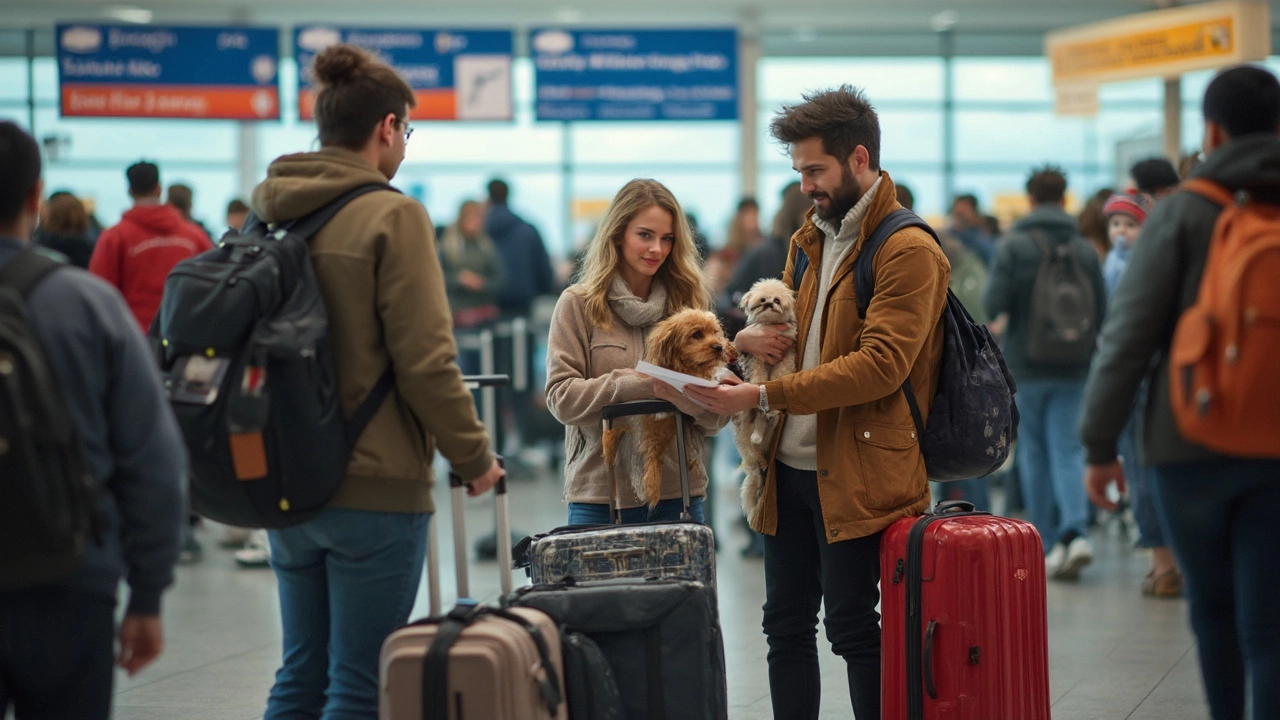Airplane Pet Rules: What Every Pet Owner Needs to Know
Planning to fly with your pet? Knowing the basic airplane pet rules can save you time, money, and stress. Most airlines treat dogs and cats as either cabin‑allowed pets or checked‑baggage, and each option has its own set of limits. Below you’ll find the must‑know details so you can book confidently and keep your furry friend comfortable.
Booking and Fees
First step: call the airline or check their website before you buy a ticket. Some carriers only let a certain number of pets in the cabin per flight, so early booking is key. Expect a fee for taking a pet on board – it usually ranges from £25 to £100 each way, depending on the airline and whether the pet flies in cabin or cargo.
When you book, you’ll need to tell the airline the pet’s weight and breed. Most airlines set a combined limit of about 8 kg (including carrier). If your dog or cat exceeds that, you’ll have to send them as cargo, which follows a different set of rules and costs more.
Don’t forget to bring a health certificate. In the UK, a vet‑signed certificate dated within ten days of travel is often required. Some airlines also ask for proof of vaccinations, especially rabies. Having these documents ready speeds up check‑in and avoids surprises.
In‑Flight Comfort and Safety
Choose an airline‑approved carrier that fits under the seat in front of you. A good rule of thumb: the pet should be able to stand, turn around, and lie down comfortably. Soft bedding adds a cozy touch, but keep it thin so the carrier stays within size limits.
Before the flight, give your pet a chance to use the bathroom. A short walk right before you head to the airport helps prevent accidents during the flight. During the journey, keep the carrier closed and avoid opening it in the cabin – the pressure changes can be unsettling.
If your dog gets anxious, a familiar blanket or toy can calm them. Some owners use a light pet anxiety jacket, but test it at home first. Remember, airlines do not allow feeding right before takeoff, so a small snack a few hours earlier works best.
When you land, give your pet a few minutes to stretch before you gather your belongings. Most pets adjust quickly once they’re out of the carrier. If you’ve flown as cargo, check the arrival area for pets – many airports have a dedicated pet claim zone.
Following these simple airplane pet rules makes the whole experience smoother for you and your companion. Book early, keep paperwork handy, pick the right carrier, and give your pet a little pre‑flight routine. With a bit of preparation, you’ll both enjoy a safe, stress‑free flight.
Posted By Bryndle Redding On 29 Apr 2025 Comments (0)
Is it Hard to Fly with a Pet? A Real-World Guide to Pet Travel
Flying with a pet can sound tricky, but it doesn't have to be a nightmare if you know what's involved. This article breaks down the real challenges of traveling with animals by air, covering everything from airline policies to how your pet might feel about the journey. You'll get tips that actually work, straight from pet owners who've been there. Whether your pet is small enough for the cabin or heading into the cargo hold, there's advice here. If you're planning your first trip with a furry friend, this is the practical, honest guide you need.
READ MORE